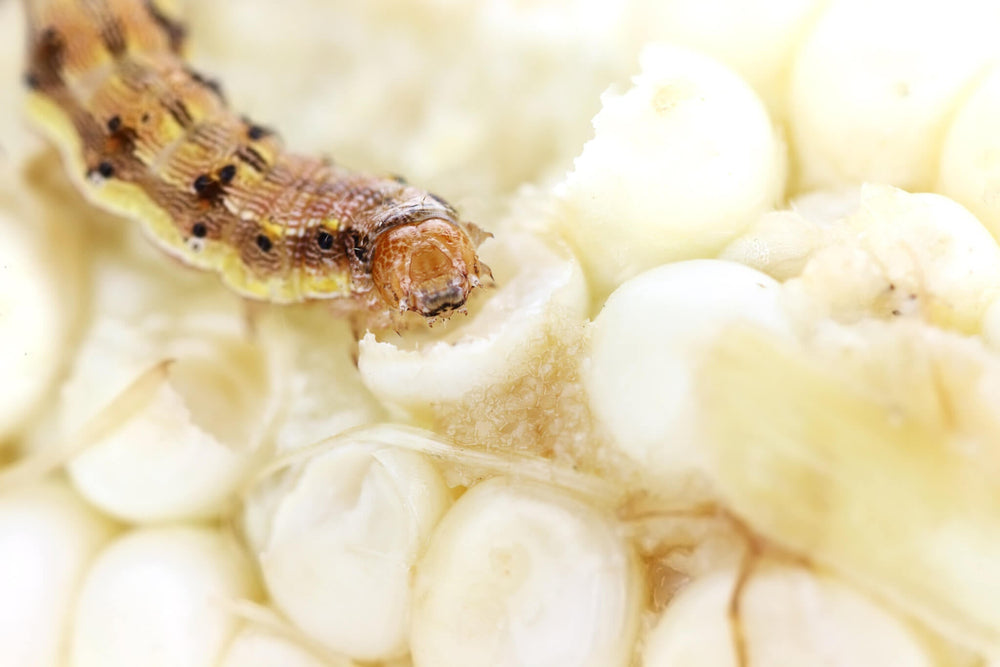
Corn earworms bore into your favorite fruits and veggies. They snack as they go, leaving an unsightly tunnel in their wake. As a gardener, there are few things more frustrating than a harvest that's been visited by these pests. They can be tough to completely eradicate once they've made their way into your produce, so preventing corn earworms should be your first line of defense. Let us teach you how to identify, prevent, and control earworms.
How to get rid of corn earworms.
What are corn earworms?
If you've ever shucked an ear of corn and discovered a worm or caterpillar, there's a good chance you've met a corn earworm eating its way through an ear—most likely ruining all or part of it. When corn earworms hatch from eggs as caterpillars, they begin feeding on the leaves of young corn, then move on to the silks and ears. When corn is not available, they attack tomatoes (giving them the pseudonym "tomato fruitworm"), beans, peas, broccoli, cabbage, lettuce, okra, peppers, squash, and pumpkin.
Fortunately, corn earworms' damage to homegrown produce is usually not extensive, and in many cases, home gardeners just live with it. However, they are a leading cause of damage to agricultural crops.
What do corn earworms look like?
Newly hatched caterpillars are very small with dark brown to black heads, but they grow quickly into caterpillars that may be yellow, green, or brown, with characteristic lengthwise stripes that are often, but not always, white. Regardless of color, they are usually plump and approximately 1.5 inches long.
How do I prevent corn earworms?
Once caterpillars are inside corn ears or other fruit, they're nearly impossible to control. Prevention and removal before they enter your crops is critical. Here are some key ways to prevent corn earworms.
- Commit to a clean garden. To help prevent new infestations each year, clean up plants as soon as the harvest is finished. Keep the garden clean of all plant debris, including dead leaves and fallen fruit. (PS: This is a good gardening practice for overall insect or disease control, not just corn earworms!)
- Consult your regional Extension office for recommended pesticides. You can find the nearest Extension office through the Cooperative Extension System map. They may suggest that you protect bean plants with Bt spray or dust applied regularly from the time you spot the first caterpillar until pods ripen. As with all garden products, apply according to label instructions.
- Plant geraniums nearby. These fragrant flowering plants, like Miracle-Gro® Geraniums, have been shown to repel corn earworms.
- Encourage beneficial insects. Plant flowers that attract insects that eat small caterpillars. For example, plant sweet alyssum to attract green lacewings.
Corn earworms are an unwelcome visitor to any home garden. But luckily, there's a good chance they won't fatally damage your plants. Do your best to keep your garden clean and use smart control strategies as needed so you can enjoy homegrown sweet corn, tomatoes, and more.






 Herbs
Herbs
 Vegetables
Vegetables
 Fruit
Fruit
 Flowers
Flowers
 Succulents
Succulents

